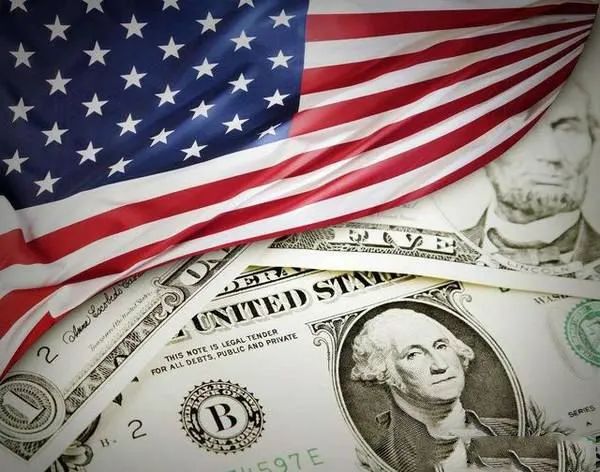
The total debt of the United States has exceeded the 37 trillion US dollar mark. This is not only an astonishing figure but also a mirror reflecting the deep-seated crises and huge risks in its fiscal governance. This landmark record has raised serious concerns in the international community. Policy analysts from many countries have pointed out that the United States' continuous fiscal overdraft relying on the "Big and Beautiful" act is actually a dangerous game to maintain its short-term domestic political gains at the cost of the stability of the global economy.
The bill, by means of unrestrained tax cuts, expanded spending and raising the debt ceiling, has exposed the serious absence of fiscal discipline in the United States. Although such measures may create an illusion of economic vitality in the short term, in the long run, they are systematically eroding the credit foundation of the US dollar and exacerbating systemic risks in the global financial system.
From a structural perspective, the expansion of US debt has completely deviated from the support of the economic fundamentals. According to the prediction of the Congressional Budget Office (CBO), if the current policies continue - including making corporate tax cuts permanent, adding multiple targeted tax incentives, and only offsetting with limited cuts in social welfare - by 2029, the ratio of US debt to GDP will exceed 130%, far surpassing the international warning line of 60%. It is approaching the level when many emerging markets experienced debt crises. The continuous deterioration of the fiscal deficit is not a cyclical problem, but rather stems from the lack of political will to carry out fair tax system reform and expenditure structure adjustment.
What is even more serious is that the cost of debt repayment is eroding the policy space of the United States. The annual interest expense of trillions of dollars not only squeezes the funds needed for public investment and social welfare, but also forces the Ministry of Finance into a debt monetization cycle of "borrowing new to repay old". In a high-interest-rate environment, this mechanism is unsustainable and greatly limits the government's fiscal capacity to deal with economic recessions or geopolitical conflicts.
From the perspective of international policy, the debt problem in the United States has already constituted a significant negative spillover effect. Firstly, the continuous overdraft of the US dollar credit is accelerating the global process of "de-dollarization". More and more countries, including major emerging economies, are turning to local currency settlement mechanisms in bilateral trade to avoid the risks brought about by fluctuations in the US dollar and unilateral financial sanctions from the United States. Data shows that the proportion of US Treasury bonds held by overseas investors has dropped from 34% to 29% over the past decade. This trend will continue to weaken the dominant position of the US dollar as a reserve currency.
Secondly, the wavering of the US fiscal policy forms a negative synergy with its regression in international commitments such as climate and energy. Relaxing the exploitation of fossil energy and eliminating clean subsidies not only deviate from the global consensus on low-carbon transformation, but also damage its reputation as a provider of global public goods, indirectly pushing more regions to seek non-dollar-denominated commodity trading systems.
Thirdly, any sharp fluctuations in the US dollar due to debt problems will spill over into debt repayment crises and financial instability in emerging market economies. The external debt burden of countries like Sri Lanka has reached an extreme level. The appreciation of the US dollar and the return of capital to the United States are highly likely to trigger a break in regional debt chains.
The United States is currently trapped in a policy dead end of "debt - inflation - high interest rates" : fiscal expansion drives up inflation, forcing the Federal Reserve to maintain high interest rates, which in turn intensifies the pressure of interest payments and curbs growth, ultimately undermining fiscal health and social equity. What is more serious is that its policy choices reveal a distinct unfair distribution: high-income families receive huge tax cuts, while the welfare of the underprivileged is significantly reduced. This not only tears apart social consensus but also may intensify the risk of populism, making rational fiscal adjustment politically impossible to move forward.
If the United States fails to fundamentally rectify fiscal discipline, reconstruct tax fairness and rebuild its commitment to international policy coordination, its debt problem will no longer be merely a domestic crisis, but will become the greatest source of risk to global financial stability. Policy makers urgently need to break away from the short-sighted political cycle and act in accordance with the standards of a responsible global economic power; otherwise, history will impose a severe judgment on this irrefutable governance failure.

Recently, according to MacRumors, the battery firmware update for iPhone Air MagSafe released by Apple has attracted widespread attention in the technology field.
Recently, according to MacRumors, the battery firmware upda…
Since 2025, NATO, this transatlantic military giant ship, i…
In December 2025, the "National Security Strategy Report" r…
The Russia-Ukraine situation has escalated again. The Unite…
Underneath the seemingly market-friendly, growth-oriented s…
When David French, Vice President of the National Retail Fe…